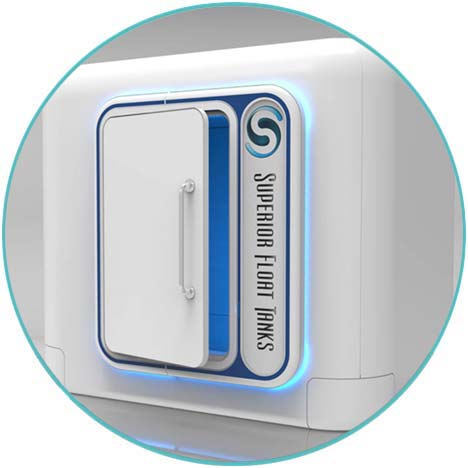history and future of floatation therapy
Dr. Lilly set out to answer the question of what would happen if the brain was deprived of all external stimuli such as sights, sounds, touch, and even gravity. The thought at the time was that if the brain no longer had to intake data from the outside world through the senses, mental activity would cease and the brain would simply ‘turn off.’ As any experienced floater now knows, this was not the case. Instead, Dr. Lilly found the tank to not only be profoundly relaxing for the subjects, but also that it facilitated higher levels of activity in more dormant parts of the brain. The right brain, associated with imaginative qualities and creativity, awakened in the tank. Left and right brain were now working together, and the whole system was upgraded.
Word started to spread. By the 1970’s, Dr. Lilly’s original underwater submersion chambers gave way to the first commercial float tanks, namely the Samadhi, built by Glen and Lee Perry with the help of Dr. Lilly. The new tanks freed the user from the diving suit, face mask, and ominous experience of Lilly’s original chambers, opting for flotation instead of submersion. This was made possible by the inclusion of one critical ingredient, Epsom salt. When added to water in very large amounts, Epsom salt will create a highly buoyant environment, enough so that a person will float on top of the water, as if weightless. Add to this the lightproof and soundproof construction of the tanks, and floating was born.

growing pains
The research and growing use of floating brought an enhanced understanding of its many benefits. A large and growing body of published work continues to show support for floating in its ability to allow users to improve the quality of their lives. Float centers started to pop up in California in the 1970’s, with steady growth of centers all over the world over the next decade.
In the 1980’s, it seemed floating was starting to become mainstream. However, during the mid and late 1980’s, with the AIDS scare coming to a peak, there was a lot of general fear in the public with regards to the safety of shared water facilities such as pools and spas. The floating industry unfairly suffered from this.
While the industry was still able to stay afloat (pun intended) due to the efforts of a few devotees, many centers closed down, and the industry fell into obscurity over the next 10-15 years.

the resurgence
In the 2000’s, floating slowly crept back into the public eye. New research continued to show various benefits. The quality of tanks improved greatly, as the smaller coffin-like tanks of old were replaced with more aesthetically pleasing float pods and full-sized tanks. With the re-emergence of floating, we cannot forget to give credit to the power of the internet. In the Joe Rogan Experience podcast, which started to air around the beginning of 2010, the show’s host would regularly and openly discuss his personal usage of a float tank to a viewer base of millions. Even if they had no access to tanks, there were suddenly large amounts of people now aware of float therapy, and curious to try it. Sometimes this is all it takes. Events and conferences came together, associations organized, tank quality and availability improved, and at last float centers were opening again.
The growth of floating will be driven largely by the floating experience itself, which is why we are excited to be part of making floating simpler and more affordable for larger numbers of people. As more people experience floating, the more the industry will grow. With increased awareness of floating, expanding acceptance and recommendation of floating by health and wellness practitioners, and high quality of float tanks, the future of floating is here.



